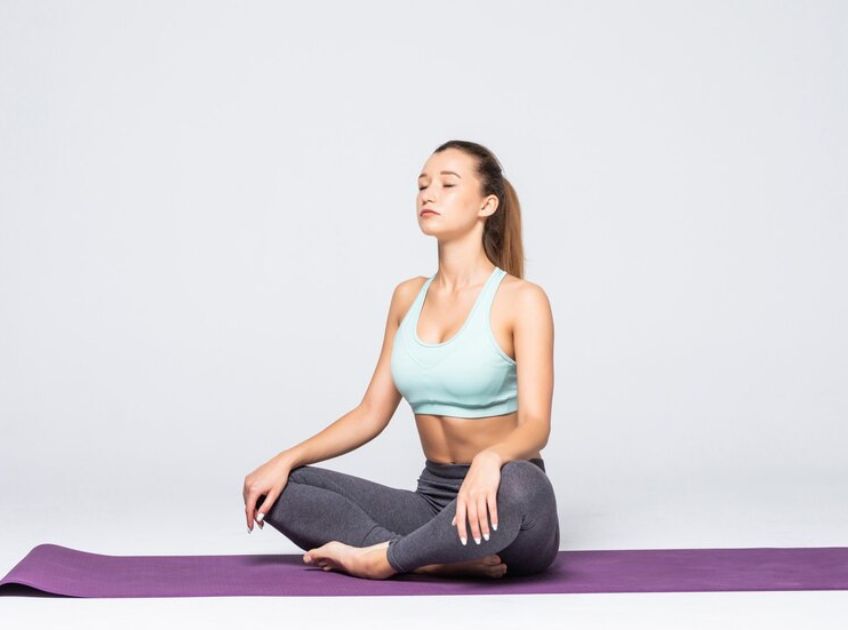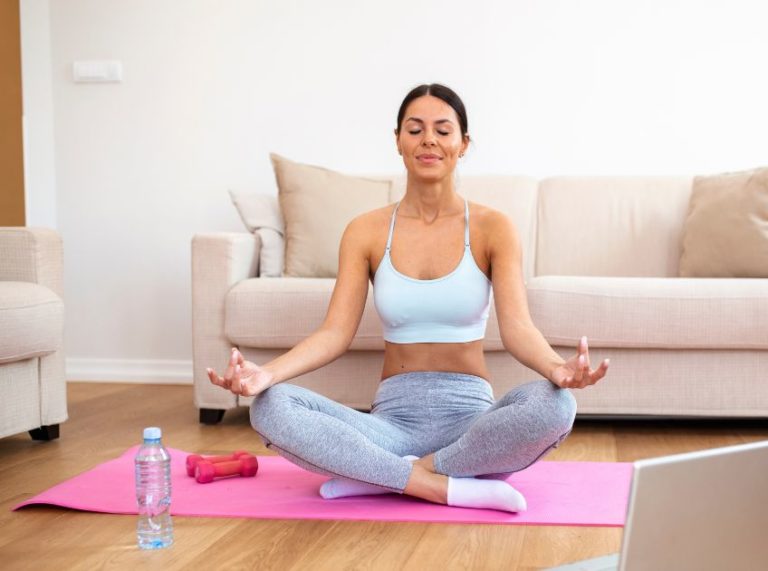
Important: This article is for informational purposes only. Please read our full disclaimer for more details.
Feeling tight, stressed, or disconnected from your body? You’re not alone. In today’s fast-paced world, most of us carry tension in our muscles, often without realizing it. Somatic exercises—slow, mindful movements that retrain your brain-body connection—can help.
The best part? You can practice somatic exercises right from the comfort of your home. No equipment. No fancy gear. Just your body, breath, and attention.
This guide will walk you through what somatic movement is, why it’s effective, and beginner-friendly exercises you can start today to reduce pain, improve posture, and boost relaxation.
What Are Somatic Exercises and Why Do They Work?
“Somatic” comes from the Greek word soma, meaning “the body as experienced from within.” Somatic exercises are gentle, intentional movements designed to bring awareness to areas of unconscious tension.
Unlike traditional workouts that focus on strength or flexibility, somatic practices help your nervous system release chronic muscle contractions caused by stress, trauma, or poor posture.
They work through a process called pandiculation—a three-part movement involving:
- Gentle contraction
- Slow, conscious release
- Complete relaxation
This method teaches your brain to regain control over muscles that have been operating on autopilot, helping you move more freely and comfortably.
Who Can Benefit from Somatic Exercises?
Somatic exercises are safe and effective for all ages and fitness levels. They’re invaluable for:
- People with chronic pain or tightness (back, neck, shoulders)
- Desk workers and those with postural imbalances
- Anyone recovering from stress, anxiety, or trauma
- Yoga, Pilates, and fitness enthusiasts wanting a deeper mind-body connection
- Older adults seeking gentle mobility exercises
Because these movements are subtle and focused on internal sensation, somatics can support emotional regulation and nervous system healing too.
The Benefits of Somatic Movement at Home
- Releases tension from hips, spine, shoulders, and jaw
- Improves posture and mobility without forceful stretching
- Calms the sympathetic nervous system (fight-or-flight)
- Increases body awareness and movement coordination
- Supports better sleep, digestion, and emotional balance
Many people report feeling taller, lighter, and more relaxed after just one short session.
How to Prepare for a Home Somatic Practice
You don’t need a gym, mat, or mirror. Just:
- A quiet, uncluttered space
- A soft surface like a carpet, yoga mat, or towel
- Loose, comfortable clothing
- 10 to 20 minutes of uninterrupted time
- An open, curious mindset
Tip: Turn off your phone and dim the lights. This is your time to reconnect with your body.
5 Beginner Somatic Exercises to Try at Home
These exercises are inspired by Clinical Somatics and Hanna Somatic Education. Move slowly, breathe naturally, and focus on how the movement feels—not how it looks.
1. Arch & Flatten (Pelvic Awareness)
Benefits: Loosens the lower back, strengthens the core, improves pelvic alignment
How to Do It
- Lie on your back, knees bent, feet flat
- Inhale and gently arch your lower back (let belly rise)
- Exhale and flatten your back into the floor
- Repeat slowly for 6–8 rounds
2. Shoulder Clock
Benefits: Releases shoulder tension and improves upper body mobility
How to Do It
- Lie on your back, arms out to the sides
- Imagine a clock face under each shoulder
- Slowly move your shoulders in a clockwise direction, then counterclockwise.
- Breathe and move mindfully for 30–60 seconds per direction
3. Cat Stretch (Side Body Rebalancing)
Benefits: Realigns spine and side body, relieves tension in hips and shoulders
How to Do It
- Lie on your stomach, head turned to one side
- Slowly contract the shoulder, waist, and hip on one side of your body
- Hold gently for a moment
- Slowly release and rest
- Repeat on the other side, 3–4 times each
4. Neck Glide & Release
Benefits: Relieves neck tension from tech use and poor posture
How to Do It
- Sit or lie down with your spine aligned
- Slowly glide your head forward (chin toward chest)
- Then glide it gently back (not tipping up)
- Repeat 6–8 times, breathing naturally
5. Breathing Body Scan
Benefits: Calms the nervous system and reconnects you with internal sensation
How to Do It
- Lie on your back, hands on your belly
- Breathe in through the nose, out through the mouth
- As you breathe, scan from head to toe
- Notice and soften any areas of tension
- Continue for 3–5 minutes
Tips to Deepen Your At-Home Practice
- Move slowly—speed hides awareness
- Close your eyes to tune into internal sensations
- Rest between movements to integrate change
- Don’t force or stretch—just explore
- Practice 10–15 minutes daily or as needed
This is not about “working out”—it’s about waking up your body.
Frequently Asked Questions (FAQ’S)
Q1: How is somatic exercise different from yoga or stretching?
A. Somatic movement isn’t about flexibility or poses—it’s about retraining your nervous system to let go of habitual tension. Movements are small, slow, and focused on internal sensation.
Q2: Can I do somatic exercises every day?
A. Yes! Daily practice—even 10 minutes—can create lasting changes. These movements are gentle and restorative, not taxing on the body.
Q3: What if I don’t feel anything during the exercises?
A. That’s okay. It takes time to rebuild body awareness, especially if you’ve been stressed or disconnected. Stay consistent, and sensitivity will improve.
Final Thoughts
Somatic exercises aren’t flashy, intense, or competitive—and that’s exactly why they work. They invite you to slow down, tune in, and reclaim a sense of safety and ease in your body.
From chronic tension to emotional stress, these movements meet you where you are. Practicing somatics at home isn’t just about mobility—it’s about self-trust, resilience, and presence.
















